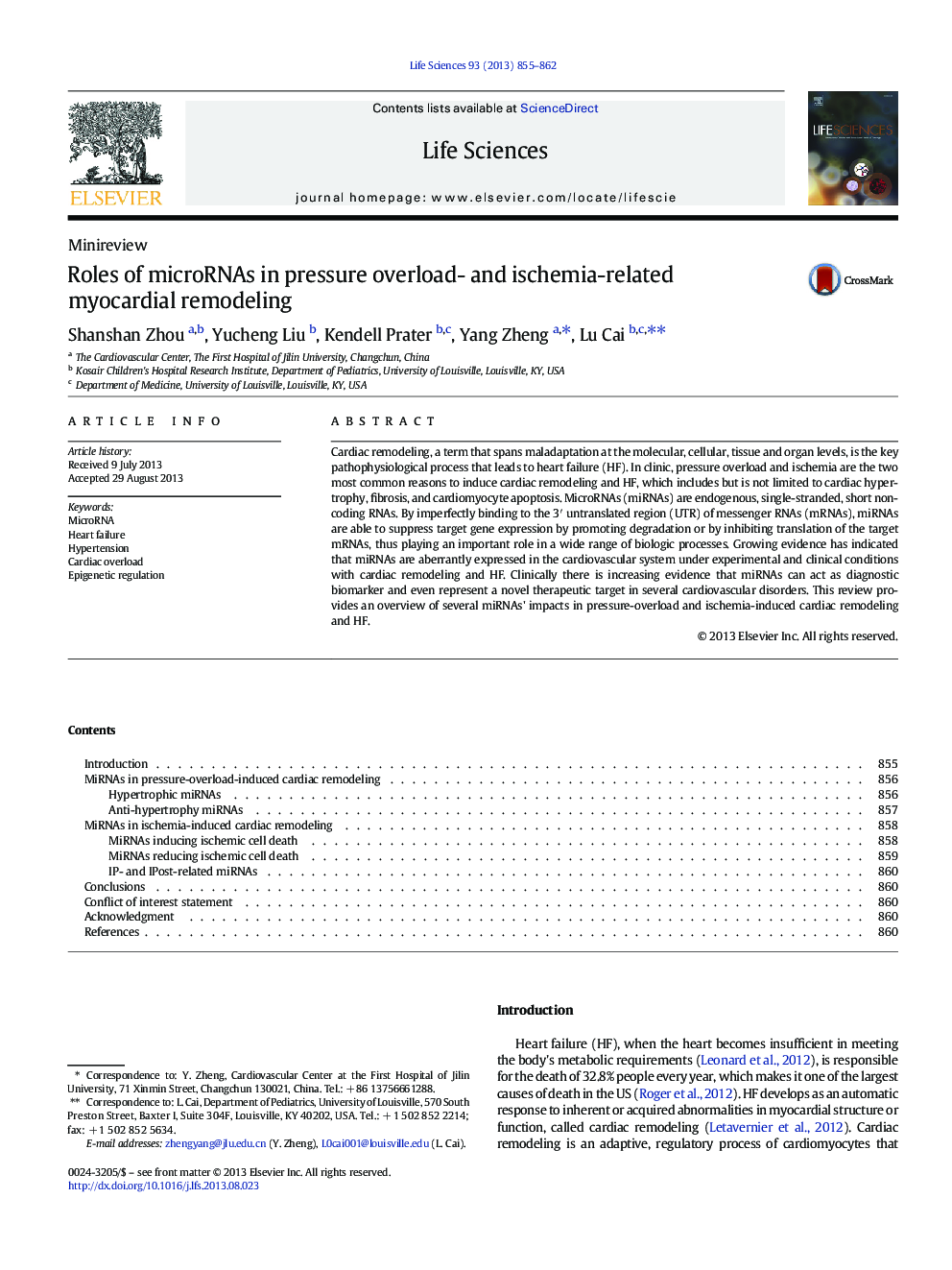| Article ID | Journal | Published Year | Pages | File Type |
|---|---|---|---|---|
| 2551430 | Life Sciences | 2013 | 8 Pages |
Cardiac remodeling, a term that spans maladaptation at the molecular, cellular, tissue and organ levels, is the key pathophysiological process that leads to heart failure (HF). In clinic, pressure overload and ischemia are the two most common reasons to induce cardiac remodeling and HF, which includes but is not limited to cardiac hypertrophy, fibrosis, and cardiomyocyte apoptosis. MicroRNAs (miRNAs) are endogenous, single-stranded, short non-coding RNAs. By imperfectly binding to the 3′ untranslated region (UTR) of messenger RNAs (mRNAs), miRNAs are able to suppress target gene expression by promoting degradation or by inhibiting translation of the target mRNAs, thus playing an important role in a wide range of biologic processes. Growing evidence has indicated that miRNAs are aberrantly expressed in the cardiovascular system under experimental and clinical conditions with cardiac remodeling and HF. Clinically there is increasing evidence that miRNAs can act as diagnostic biomarker and even represent a novel therapeutic target in several cardiovascular disorders. This review provides an overview of several miRNAs' impacts in pressure-overload and ischemia-induced cardiac remodeling and HF.
Graphical abstractFigure optionsDownload full-size imageDownload high-quality image (136 K)Download as PowerPoint slide
